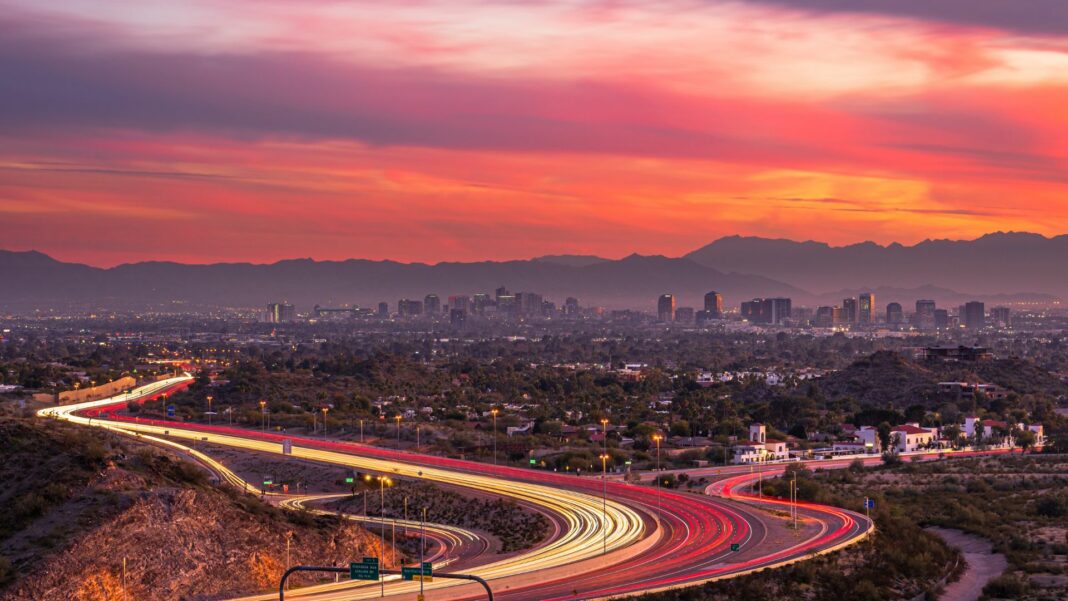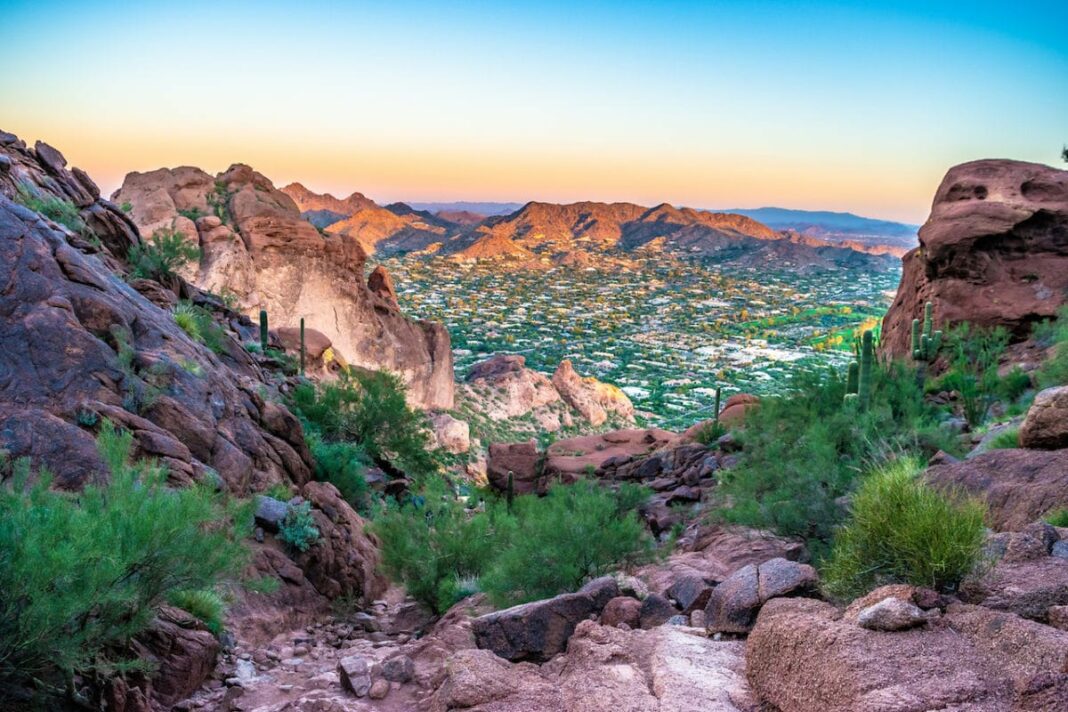
Phoenix, AZ, is the capital city of Arizona and one of the most populous cities in the United States. Known for its sunny weather, desert landscapes, and bustling city center, Phoenix has plenty to offer both visitors and residents alike. Englishman “Lord” Phillip Darrell Duppa suggested the name Phoenix to describe a city born from the ruins of a former civilization. If you think that’s interesting, this city has a lot more in store for you. Here are some more tidbits about Arizona’s capital and largest city.
1. Phoenix is the fifth-largest city in the US
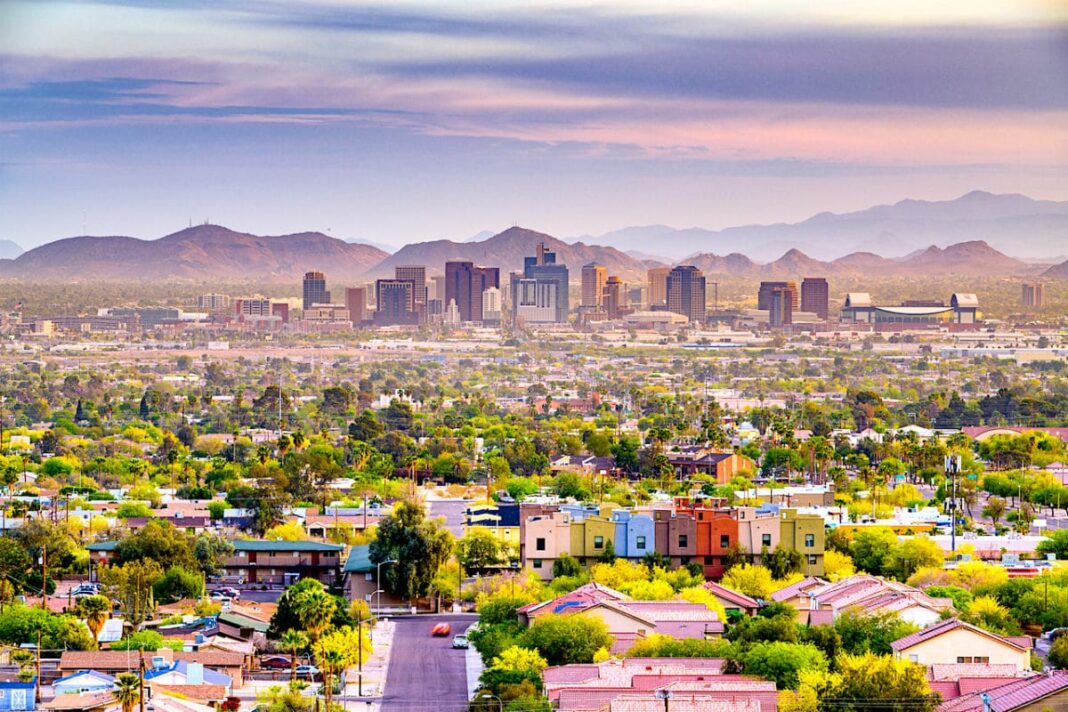
Phoenix is the only state capital with a population of more than one million residents, with over 1.6 million people (as of 2017). It’s the most populous state capital in the US, the fifth most populous city nationwide, and the most populous city of the state of Arizona.
The Greater Phoenix Area (including the surrounding cities of Chandler, Glendale, Scottsdale, and Tempe) has a population of nearly 4.5 million and covers 2,000 square miles. Consistently outpacing U.S. population growth over the last 18 years, the area is projected to grow by nearly 60 percent in the next decade or so, which is incredible to think about considering the population of the entire state of Arizona is currently just over 7 million.
2. Phoenix does not observe daylight savings time

Daylight saving time is controversial, and the Grand Canyon State decided to forgo “springing forward” and “falling back” with the rest of the country. Enjoy consistent clocks year-round.
3. Phoenix is a desert paradise
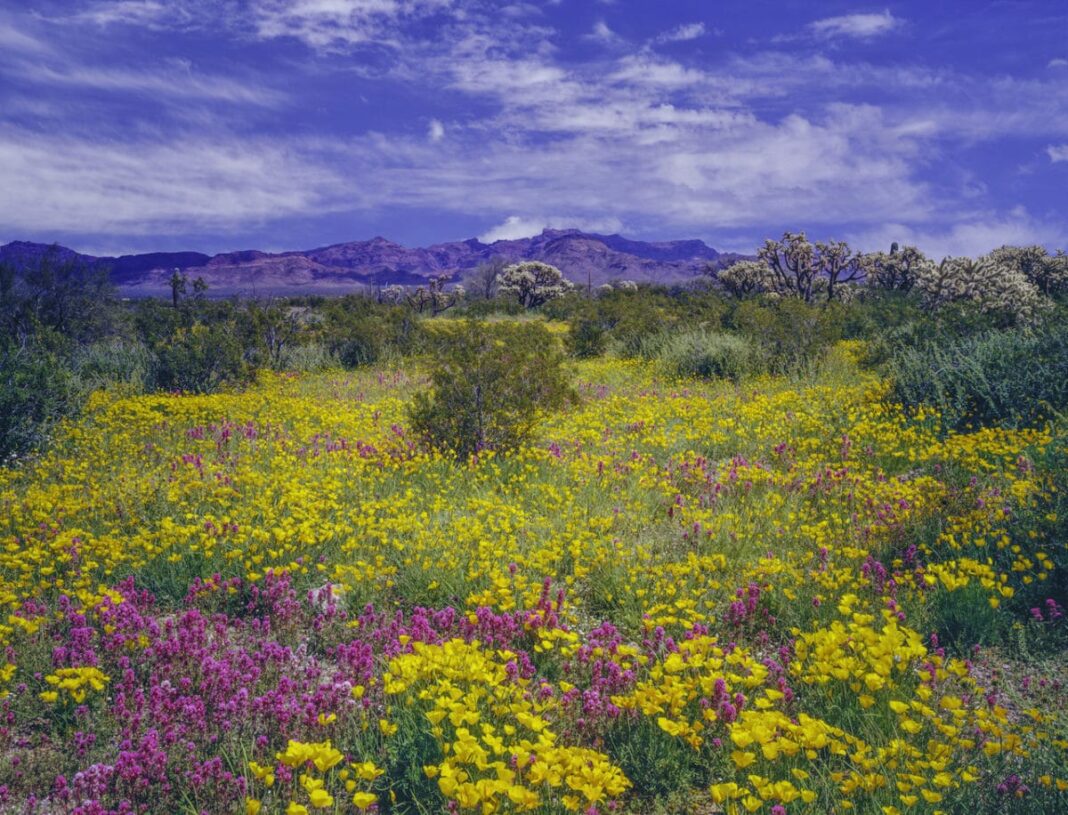
There are only 21 deserts in the world—four in North America—and Arizona is the only state in the U.S. to have a section of all of them within its borders. Greater Phoenix is located in the Sonoran Desert, with an elevation of 1,117 feet above sea level. It’s not your typical dry desert, though. The Sonoran Desert is actually one of the wettest and greenest deserts in North America due to the 3-15 inches of annual rainfall it sees. Just one look at those spring wildflowers and you’ll see how unique this desert is.
4. The Saguaro Cacti thrive in Phoenix

The Sonoran Desert is also one of the few native habits for the saguaro cactus, a type of cactus that can grow more than 40 feet tall and live more than 150 years. It can take 50 to 100 years for the saguaro cactus to grow its “arms”. It’s illegal to harm a saguaro in Arizona, and you’ll be facing felony charges if you cut one down without a permit, even on your own property. While we’re on the subject, it is also illegal for a donkey to sleep in a bathtub—state law.
5. Phoenix is sunnier than any other major metropolitan area in the US

With an average of over 100 days where temps sit at 100°F or above (late May-early September), it’s an understatement to say Phoenix is hot. According to the National Climatic Data Center, Phoenix is sunnier than any other major metropolitan area in the US, with 334 days of sunshine a year. The hottest temperature ever recorded was 122°F at Sky Harbor International Airport on June 26, 1990. Even in the winter, temps hover around 67 degrees and rarely dip below freezing. And, you can ditch your umbrella—it only rains about eight inches annually.
The tradeoff for the warm desert weather is wind/dust/sand storms called haboobs, which can last up to three hours. According to the National Weather Service, Phoenix experiences about three of these large, dangerous storms a year, usually between June and September when it’s super dry.
6. Phoenix is a hub for business

The pillars of Arizona’s original economy were the “Five C’s”: Copper, Cattle, Cotton, Citrus and Climate. Now, the major industries in Greater Phoenix are high-tech manufacturing, tourism, and construction. Four Fortune 500 companies are headquartered in Greater Phoenix: Freeport-McMoRan, Avnet, Republic Services, and Insight Enterprises.
7. Phoenix population grows in the winter
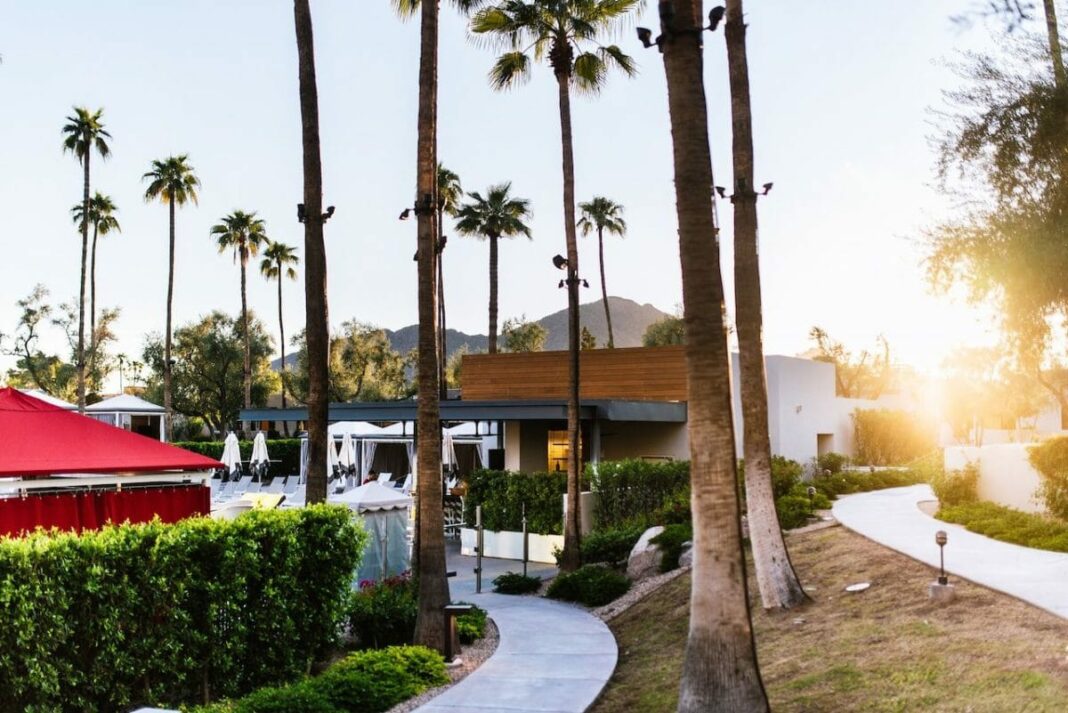
Going hand in hand with tourism, hospitality is another major industry in Greater Phoenix, with its many Five Star/Five Diamond, Four Star/Four Diamond resorts. There are nearly 500 hotels and more than 40 resort properties with over 62,000 guest rooms to house the 22+ million people who visit metropolitan Phoenix each year. Each winter 400,000 “snowbirds” hibernate in the Phoenix heat, from Oct/Nov-April/May.
8. Phoenix is one of the top golf destinations in the world

Greater Phoenix has become one of the top golf destinations in the world, thanks to its almost 200 golf courses. But if a round of 18 holes isn’t your thing, there are plenty of other outdoor activities to enjoy when it’s not too hot, like hiking, biking, and horseback riding.
Hit the trails at the largest municipal park in North America–South Mountain Park and Preserve. Hike up Camelback Mountain, a mountain that resembles, wait for it…the hump and head of a kneeling camel. Or, have some fun in the sun at one of the six lakes within a 75-minute drive of the city. The plentiful outdoor activities make up just one of the many reasons to move to Phoenix.
9. Phoenix has a strong culture
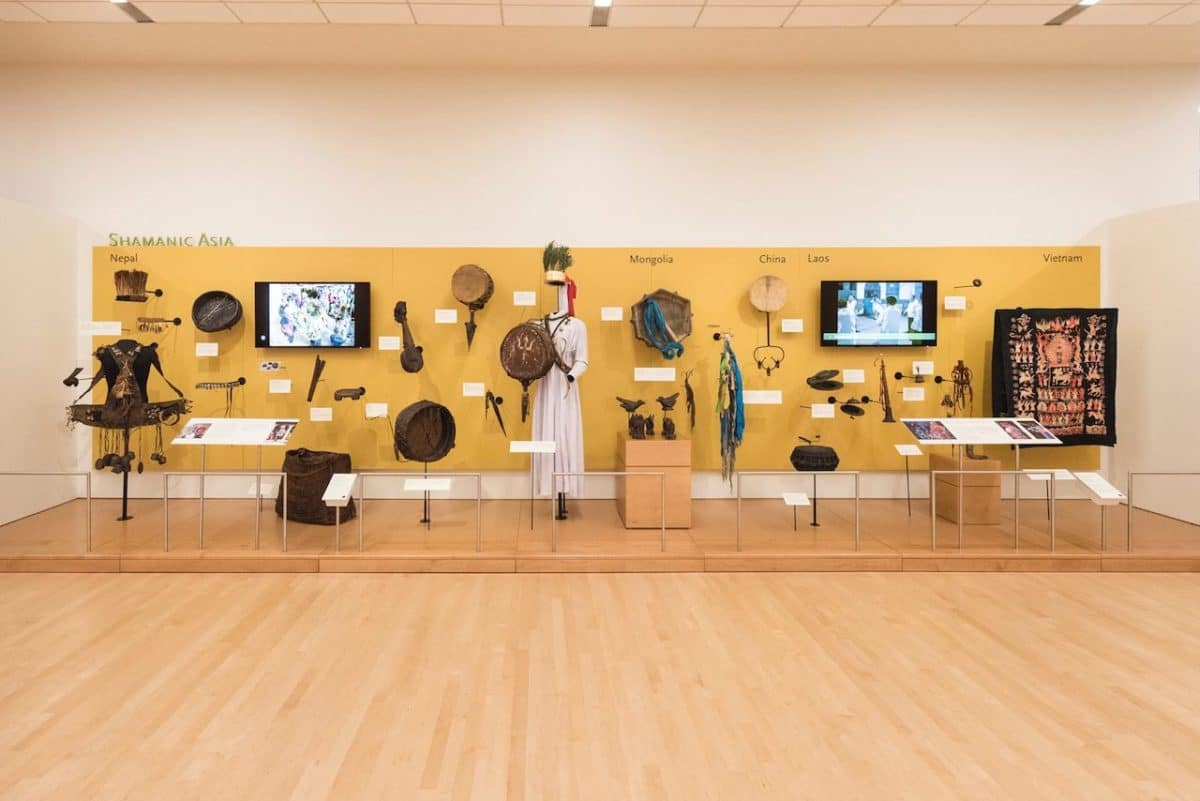
Another fun thing to do is check out the world’s largest collection of desert plants at the Desert Botanical Garden. Head to the Heard Museum or Pueblo Grande Museum for some Native American history. Or visit the home of the Frank Lloyd Wright Foundation, Taliesin West. The Phoenix Art Museum is the Southwest’s largest art museum, and there’s even a museum dedicated to musical instruments that’s been ranked one of the country’s best.
10. MLB has a home in Phoenix
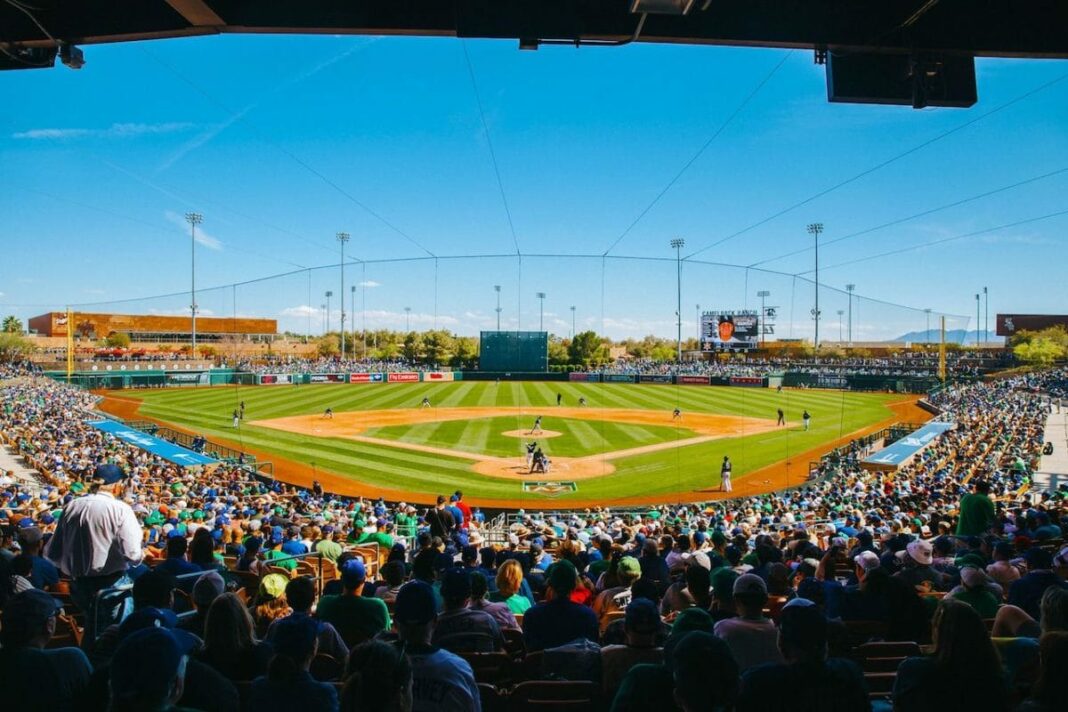
Sports fans have all their bases covered in Phoenix, with franchises in all four major pro sports leagues: Phoenix Suns (NBA), Arizona Diamondbacks (MLB), Arizona Cardinals (NFL) and Arizona Coyotes (NHL). Even NASCAR fans won’t be disappointed since ISM Raceway hosts two NASCAR events each racing season.
Baseball might be the Phoenix area’s bread and butter, though. Half of MLB teams (15 total in the Cactus League) come to Phoenix for Spring Training, including the Cubs, White Sox, Royals, Dodgers, Brewers, Oakland A’s, Padres, Giants, Rangers, and of course, the Arizona Diamondbacks.
The Arizona Cardinals play at State Farm Stadium in Glendale, one of the Phoenix area’s best neighborhoods. The stadium which features both a retractable fabric roof and a roll-out grass field. Magic! State Farm Stadium will host Super Bowl LVII in 2023, as well as college football’s annual Fiesta Bowl.
Frequently asked questions
Phoenix is most well known for its hot weather, desert landscapes, and cultural attractions.
Some popular attractions in Phoenix include the Musical Instrument Museum, the Phoenix Art Museum, and the Heard Museum.
The cost of living in Phoenix is lower than the national average. The cost of living can vary widely depending on individual circumstances, such as where in the city you live, your income level, and your lifestyle. However, overall, Phoenix is considered to be a relatively affordable place to live compared to many other major cities in the US.
Think Phoenix sounds like a cool place? We do, too. Get a head start on your apartment search and find a place you love before you move there.


